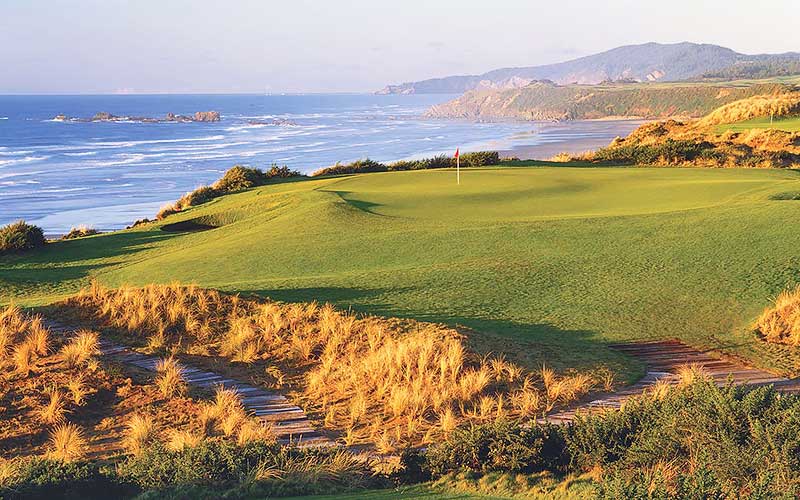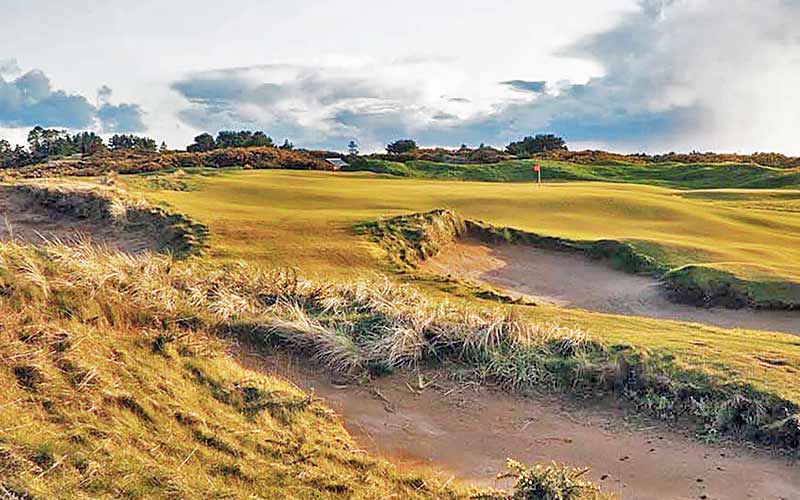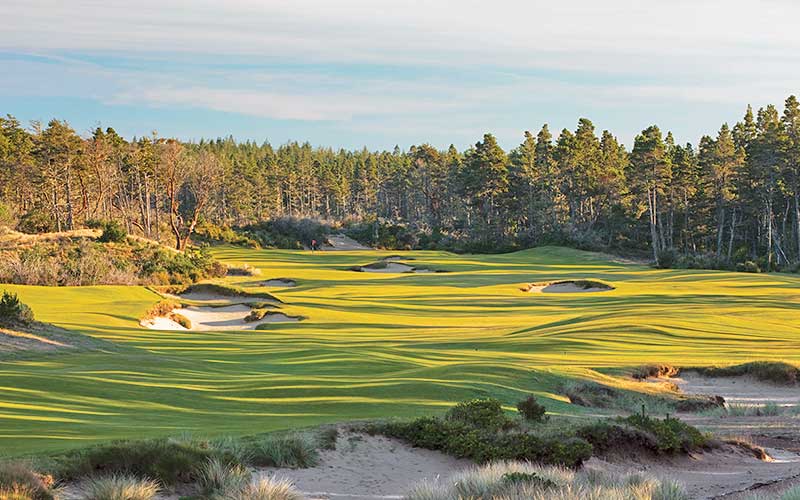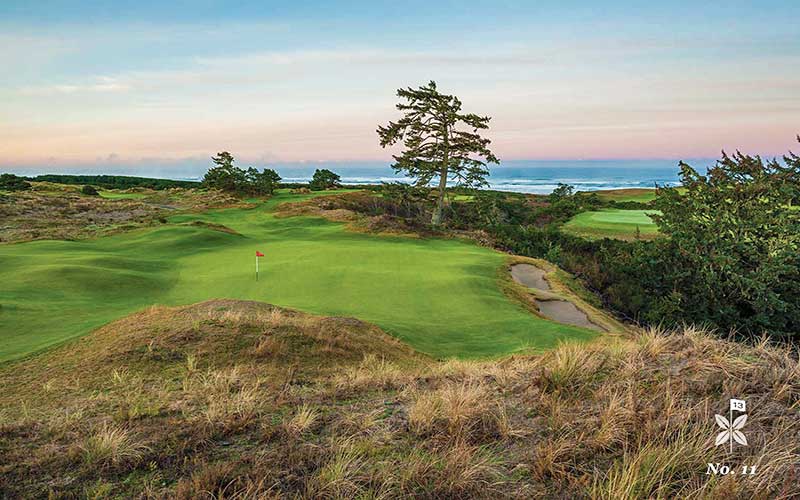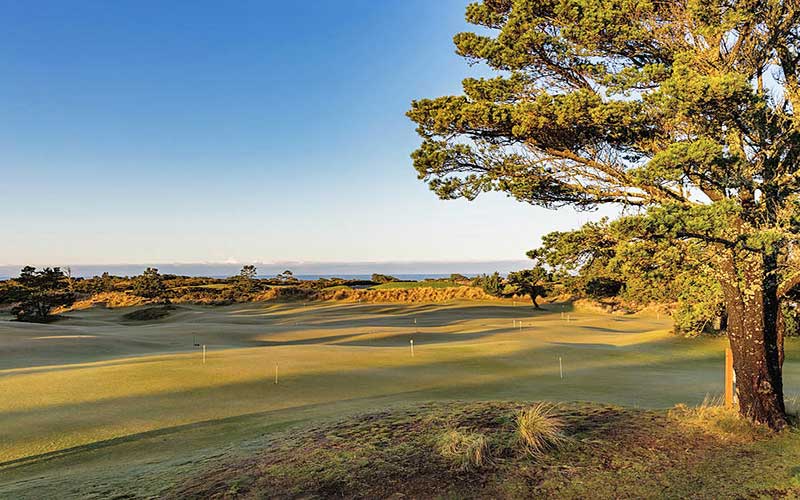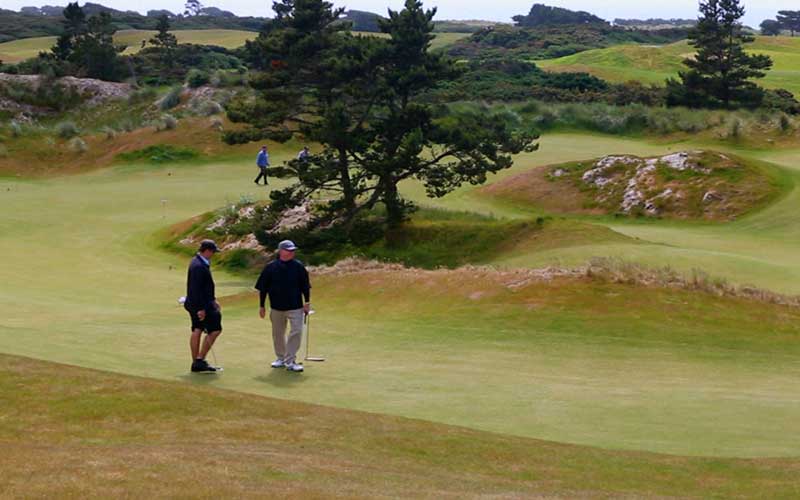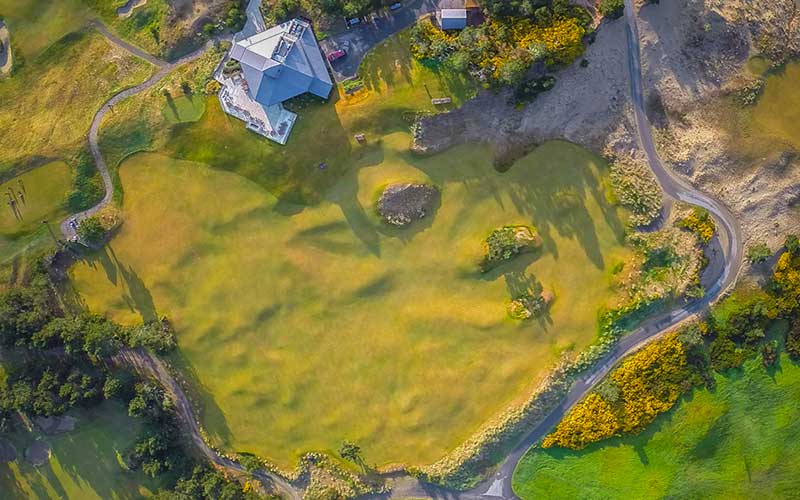GOLF COURSES
GOLF COURSES
PACIFIC DUNES
Designed by Tom Doak and opened in 2001, Pacific Dunes is remarkably different in character and shot making requirements than the other resort other courses.
Pacific Dunes doesn't feel like it was built as much as it was discovered. Rippling fairways remain just as they were found and natural bunkers line the landscape as they have for centuries. The course emerges from shore pines to spectacular 60-foot sand dunes.
When the wind blows, precise approach shots are a necessity. Pacific Dunes is short enough to give you hope, but rugged enough to test every facet of your game.
BANDON DUNES
It began in 1999 with the opening of Bandon Dunes. Designed by Scotsman David McLay Kidd, the course is perched on a bluff high above the Pacific Ocean. Bandon Dunes unfolds along pristine native dunes where expansive ocean views are revealed on nearly every hole.
The course is completely natural and routed through an environment of indigenous vegetation. Beyond breathtaking scenery lies the game of golf in its truest form. This is a thinker's course. Winds are ever-present, and the varying elements create a new experience each time you play.
SHEEP RANCH
MORE THAN 15 YEARS IN THE MAKING, THE SHEEP RANCH IS EXCITED TO ANNOUNCE IT WILL BE OPENING TO THE GOLFING PUBLIC IN JUNE 2020.
The design team of Coore & Crenshaw were hired to work on the Par-71, 7,000-yard 18-hole layout. Co-founded by Phil Friedmann and Mike Keiser, the Sheep Ranch was for many years a mysterious golf landscape just north of Bandon Dunes Golf Resort. Located on Five Mile Point, and originally designed by Tom Doak in 2001 while he worked on Pacific Dunes, the property is being renovated for full public use in conjunction with the adjacent Bandon Dunes property.
With one mile of ocean frontage, nine green sites right along the edge of the continent, and stunning Pacific Ocean views on every hole, Sheep Ranch will continue the legacy of “Golf As It Was Meant to Be” on the Pacific Coast.
OLD MACDONALD
18 holes, 72 par, 6944 yards
The fourth course at Bandon Dunes pays homage to golf course architect Charles Blair Macdonald by asking one simple question: What would Macdonald have created had the Oregon Coast been his canvas?
Inspired by Macdonald's iconic work, course architects Tom Doak and Jim Urbina crafted a course that seeks the answer upon vast greens, among myriad angles of play, and from the depths of fierce bunkers. By celebrating these classic concepts of design, we honor the traditions of this game we love.
BANDON TRAILS
18 holes, 71 par, 6759 yards
When Bill Coore and Ben Crenshaw began working in the sand to uncover our third course, they faced the challenge of following Bandon Dunes and Pacific Dunes.
Opened in 2005, Bandon Trails begins atop a massive sand dune, then quickly opens into a sprawling meadow. The routing then works higher into the coastal forest, before finally returning to finish in the dunes. The course is enjoyable to walk and is a constant reminder of how the game was originally created among inland rolling dunes with dramatic ocean vistas.
BANDON PRESERVE (PAR 3)
A unique experience in every way, Bandon Preserve is a 13-hole par-3 course that delivers a level of enjoyment matched only by the spectacular views.
Opened in 2012 and designed by Bill Coore and Ben Crenshaw, Bandon Preserve begins high atop a sand dune and rolls down toward the beach. The Pacific Ocean provides the backdrop to every hole.
All net profits from greens fees go to the Wild Rivers Coast Alliance of Oregon.
THE PUNCHBOWL 18 HOLE PUTTING COURSE
The newest addition to Bandon Dunes, The Punchbowl is a 100,000-square-foot putting course designed by Tom Doak and Jim Urbina.
No tee times are needed, just show up and put your golf ball in the queue. It is open by 2pm and closes at dusk. Night use is prohibited. There is no cost to play, The Punchbowl is a complimentary amenity for resort guests and takes about an hour to play.
There are 18 holes, lengths differ from day to day. Some are short, some are long. The green is about 100,000 square feet, or 2.3 acres.










